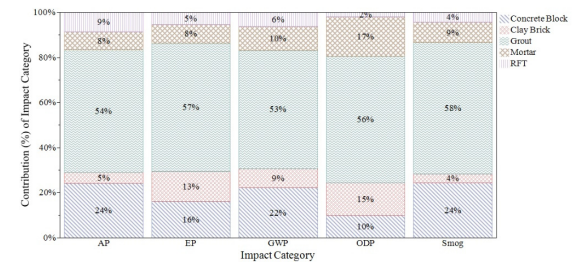Abdalla Talaat, Mohamed Ezzeldin, and Wael El-Dakhakhni
i Research Assistant, McMaster University, Hamilton, Canada, talaaa1@mcmaster.ca
ii Associate Professor, McMaster University, Hamilton, Canada, ezzeldms@mcmaster.ca
iii Professor, McMaster University, Hamilton, Canada, eldak@mcmaster.ca
ABSTRACT
Reducing the environmental impacts of the construction industry is becoming increasingly urgent for Canada to meet its committed climate change mitigation targets. As the masonry industry explores new decarbonization pathways, current life cycle assessment (LCA) efforts remain inconsistent and not standardized. In this respect, the current study evaluates the environmental performance of masonry construction using a comprehensive LCA methodology. The study first appraises the underlying principles behind life cycle-based environmental assessment. Subsequently, focusing on embodied impacts, the study outlines how different calculation tools and data sources can offer a clear, systematic, and transparent approach to assessing masonry products. Rather than solely emphasizing operational efficiency, the analysis highlights the importance of quantifying material-related impacts for energy-efficient buildings. Finally, a case study is presented herein, where the environmental impact of a masonry wall assembly is calculated using different LCA approaches. The analysis results show that black-box LCA calculations showed lower environmental impacts compared to the manual step-by-step calculation alternative. The latter offered a higher level of detail and transparency, allowing for the identification of material hotspots. For example, grout was the dominant contributor across all impact categories, suggesting that optimizing its quantity or using alternative mix designs could enhance the eco-efficiency. Evidently, employing robust calculations strengthens the credibility of the environmental assessment and moves us a step further towards standardizing the assessment of embodied impacts –similar to operational efficiency. This research area is expected to steer the masonry industry toward more sustainable practices and supports the achievement of its decarbonization targets.
KEYWORDS: Life Cycle Assessment (LCA), Environmental Assessment, Decarbonization, Building Sector, Masonry Structures.
185-Talaat.pdf



